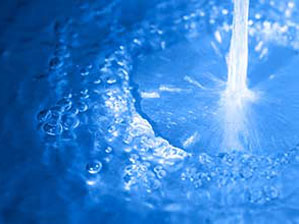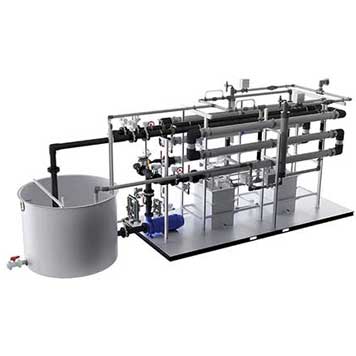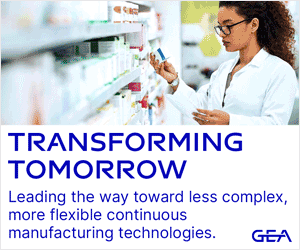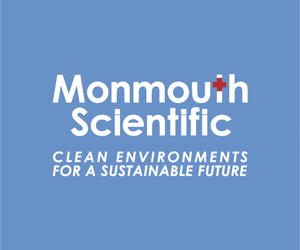With water costs on the rise and the gap between global water supply and demand projected to reach 40% by 2030 if current practices continue, water usage in pharmaceutical product development not only contributes to a global water supply shortage … it also elevates risk at the corporate level.1
According to a report from the US Department of Energy, the average annual price escalation rate for water is 4.1% based on reported rates from 2008–2016.2 In addition to the cost of raw materials, wastewater compliance costs are mounting.
Several factors contribute to higher water expenses, such as sewer fees for discharge to a wastewater treatment plant (WWTP), sewer permits for effluent, biological oxygen demand (BOD), chemical oxygen demand (COD) and fines for overages.
Both reputation and operational sustainability are at stake. Fortunately, as pharmaceutical companies hone environmental, social and corporate governance strategies, sustainability improvements are helping these entities to demonstrate responsible operating practices that benefit both the global community and the bottom line.

Wastewater sources and processes
Not only is water a fundamental excipient in pharmaceutical development, it is also essential for numerous processes used to support production. Generators of wastewater in pharmaceutical manufacturing include the following.3
Chemical reactors: Wastewater is produced with each chemical modification as reactors are emptied, cleaned and refilled. The wastewater may include reaction residues, unreacted reactants, product and by-products including acids, bases, metals, halides, nitrates, cyanides, sulphates and active pharmaceutical ingredient (API) traces.
Fermentation and purification processes: The wastewater may include biologically active substances (such as enzymes), nutrients (starches, sugars, polyols), trace elements, vitamins, amino acids, inorganic and organic salts, surface active agents or complex (undefined) ingredients.
Extraction processes: More than 30 solvents are regularly used in pharmaceutical manufacturing including ethanol, methanol, acetone, isopropanol and acetic acid. Although some solvents are recovered prior to discharge, a portion remains in the wastewater.
Mixing and granulation processes: Wastewater is produced after equipment used to mix APIs and excipients is rinsed. The wastewater may contain residues from detergents, excipients and APIs, such as waste starches and sugars.
Equipment and floor cleaning: Wastewater contains detergents and pollutants resulting from equipment utilisation.
Scrubber blowdown: Wastewater produced from scrubber blowdowns contain soluble and insoluble organic compounds and absorbed chemicals (acids/bases).
Laboratory facilities: Wastewater from laboratory facilities may include toxic compounds and traces of APIs.
Production of compendial and utility waters: Examples of this include reverse osmosis concentrates and cooling tower/boiler blowdown wastewaters, which contain dissolved salts, alkalinity, clean-in-place (CIP) chemicals and total suspended solids (TSS).
Sanitary wastewater: This wastewater may contain organic pollutants, suspended solids, fat, oil and grease (FOG) and micro-organisms. If wastewater is to be treated and reused, sanitary wastewater should not be combined with other wastewaters intended for reuse.
Treatment goals and system specification
To combat rising costs and meet compliance directives, many pharmaceutical companies are adopting zero liquid discharge (ZLD) programmes that minimise or eliminate discharge of effluent by treating and recycling wastewater.

Capable of reducing water volumes by up to 98%, wastewater treatment systems allow pharmaceutical manufacturers to decrease their water expenses, meet ZLD goals and comply with state and local regulations. Disposal costs can drop as low as 15 times the original amount.
With capabilities that are proven to not only reduce water consumption but also lower carbon dioxide (CO2) emissions, wastewater recycling equipment is progressively becoming a part of pharma sustainability action plans as a result.
For instance, a research laboratory centre developing therapeutic products to help with respiratory, musculoskeletal and cardiovascular diseases was consuming high quantities of water in its processes. During a typical day, the lab discharged about 4 tons of effluent.
This resulted in a high volume of wastewater and disposal costs. If the pharma lab treated the wastewater and reused the treated water in its processes, water consumption and disposal costs would decrease substantially. The pharmaceutical laboratory added vacuum evaporation to treat its wastewater, which enabled the facility to recover more than 90% of the water for reuse.4
Although pharmaceutical manufacturers have much to gain from wastewater treatment, adding these capabilities on-site is not without challenges. Pharmaceutical wastewater treatment is a particularly specialised process because wastewaters from pharmaceutical manufacturing are highly inconsistent.
Whether producing APIs or finished products via chemical synthesis or bioprocessing, each wastewater is derivative of the unique processes used to develop the product. In fact, plant producing the same product can have variations in the wastewater. As a result, wastewater treatment systems are equally diverse.
A laboratory analysis of the wastewater, a careful review of the production process and a goal assessment provide a starting point for specifying a treatment solution. During the review, water volumes, water temperature and flow rates all need to be defined.
Additionally, operational goals need to be discussed. For a treatment plan that includes reuse, parameters of the recycled water are dependent on the reuse application. In most cases, reuse applications are for low-grade water requirements such as make-up water for cooling towers, boilers, cleaning or irrigation.
Parameters that are analysed during laboratory testing include
- pH
- chemical oxygen demand (COD)
- biological oxygen demand (BOD)
- total suspended solids (TSS)
- total Kjeldahl nitrogen (TKN)
- ammonia (N-NH4+)
- total phosphorus (TP)
- fat, oil and grease (FOG)
- total dissolved solids (TDS)
- salts
- micro-organisms.
The results of the lab analysis will help wastewater treatment experts to define a system that will perform the processes needed to meet compliance and business objectives. There are several key processes used to treat pharmaceutical wastewaters. They include the following.
Segregating or deactivating wastewater streams: This may be necessary to treat highly concentrated or toxic streams, or it may be more cost-effective when the bulk of wastewater does not contain APIs and, therefore, treating the full volume of the wastewater for API reduction/removal is inefficient.
Streams containing biologically active ingredients may need to deactivate those substances prior to being combined with other wastewater streams.
Equalisation: Placing wastewater in an equalisation tank aligns the flow rate, balances the contaminants and eliminates temperature fluctuation.

pH adjustment: Adjusting the alkalinity or acidity of wastewater may be needed to achieve efficient processing in downstream treatment stages.
Removing suspended solids: This may be achieved through a combination of coagulation, which clumps particles together, flocculation, which removes the clumps, flotation, sedimentation or filtration.
Aerobic or anaerobic biological treatment: This converts biodegradable organic matter into biomass that may then be separated from the treated water.
Evaporation: Also known as evapoconcentration or distillation, this process is used to reduce the volume of wastewater prior to disposal. It produces high-quality condensate that in many cases may be recycled and reused.
Common types of wastewater treatment systems
Because the treatment of pharmaceutical wastewaters is unique to the specific production process, modular wastewater treatment solutions complete specific treatment processes. Here are four common solutions that pharma manufacturers are using to lower costs and meet sustainability goals.
Oil water separators: These systems can reduce haul-away costs by up to 90%, decrease water consumption and increase the lifespan of soluble oils, wash water, rinse water and pressure wash-down water (or process water).
A down-flow gravity coalescing method separates oil from water to less than 15 ppm. The oil/water mixture is pumped via a floating skimmer or is gravity fed into a separator where free and mechanically dispersed oil is removed from the influent.
The separated oil is automatically gravity discharged to a waste container. The clean water is discharged by gravity or through an optional discharge pump to the sewer or back into the process.

Ultrafiltration (UF): These systems clarify solutions containing suspended solids, bacteria and high concentrations of macromolecules, including oil and water. Ultrafiltration utilises crossflow filtration to remove emulsified oils, suspended solids, metal hydroxides, emulsions, dispersed material, suspended solids and other large molecular weight materials.
During UF, fluid flows parallel to a semipermeable membrane, which retains the emulsified oils and the suspended solids, whereas the water and dissolved solids pass through the membrane. Different membrane configurations help pharma companies to accommodate unique operational considerations such as floor space and energy consumption.
Additionally, the quality of the effluent that UF produces is typically very consistent. This dependability reduces the amount of testing required to validate the quality of the water for reuse.
Vacuum evaporation: Evaporation differentiates itself from other separation processes by removing water from contaminants, as opposed to filtering contaminants from the water. Vacuum evaporators achieve the highest rates of water recovery and concentration.
Capable of treating and distilling pharmaceutical wastewater volumes from 1–120 tons per day and producing residual total solids concentrations of more than 85%, vacuum evaporators can reduce water costs up to 99%. Three types of vacuum evaporators include
- Heat pumps: flexible and versatile with low electrical energy consumption and superior reliability
- Hot water/cold water: utilises existing excess hot water/steam and cooling water to lower operating costs.
- Mechanical vapour recompression (MVR): uses low boiling temperatures to treat wastewater volumes with high flow rates.
Reverse osmosis (RO): This filtration technology removes dissolved solids and impurities from water using a semipermeable membrane. The membrane allows the passage of water but retains the majority of dissolved solids and other contaminants.
An RO system that is properly designed and operated can remove up to 99.5% of incoming dissolved salts and impurities. However, RO membranes require high water pressure (greater than osmotic pressure) to work effectively.
Conclusion
Although pharma companies should first look at water usage in their own operations, supply chain sources also merit scrutiny. An estimated 80% of the world’s APIs come from China, India and a few other countries.5
Because water insecurity is a global concern, risk management must extend beyond the walls of a company’s manufacturing plant — especially as drug developers intensify production efforts to meet the growing demand for pharmaceuticals.
According to a report from Barclays, the cost for biotech, healthcare and pharma industries to address water usage is $4 billion, compared with the $52 billion potential maximum financial impact the industries could face if they fail to address water insecurity.6
Drug producers that utilise on-site wastewater treatment and recycling will simultaneously advance their sustainability practices, safeguard the pharmaceutical supply and develop a competitive advantage.
References
- www.weforum.org/our-impact/closing-the-water-gap/.
- www.energy.gov/sites/prod/files/2017/10/f38/water_wastewater_escalation_rate_study.pdf.
- www.veoliawatertech.com/sites/g/files/dvc3601/files/document/2020/06/Veolia_Pharma_Guide_Wastewater_2020_HR_With_Links_0.pdf.
- www.prab.com/pharmaceutical-research-laboratory-reduces-wastewater-volume-and-disposal-costs-with-vacuum-evaporation/.
- https://hbr.org/2021/08/the-u-s-needs-to-reimagine-its-pharma-supply-chain.
- www.cib.barclays/our-insights/3-point-perspective/calculating-the-true-cost-of-water-for-the-consumer-staples-sector.html.




